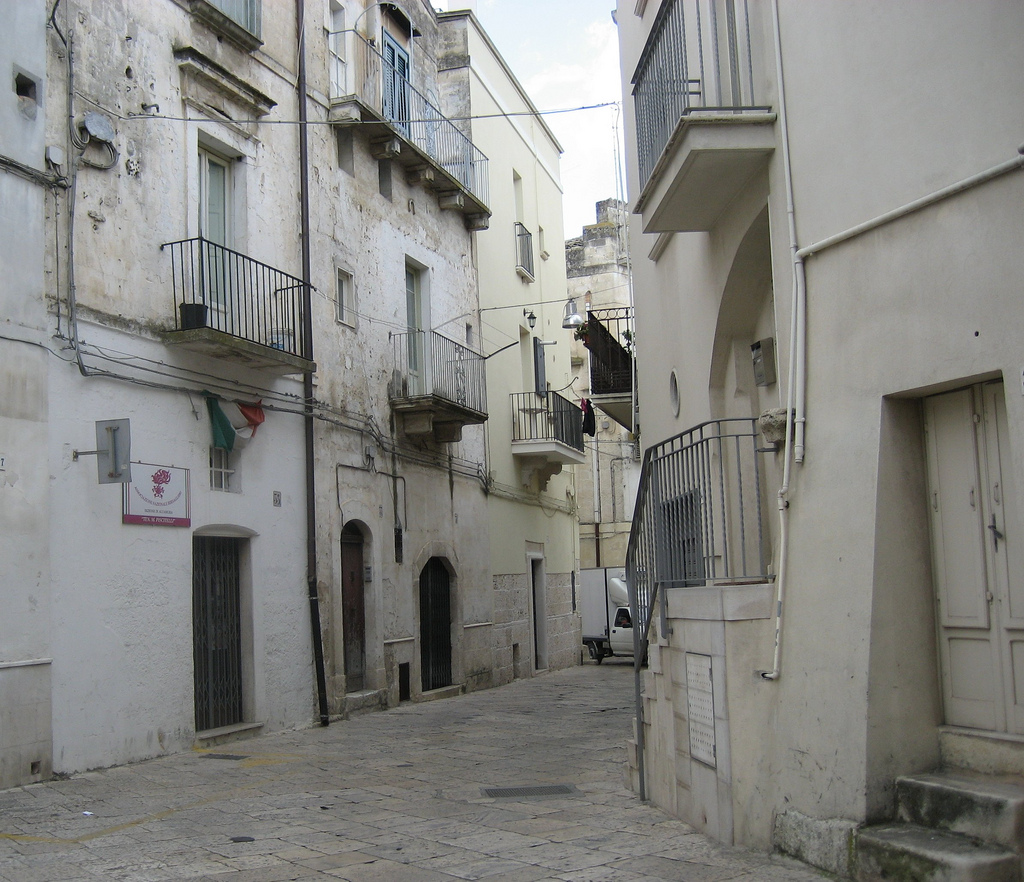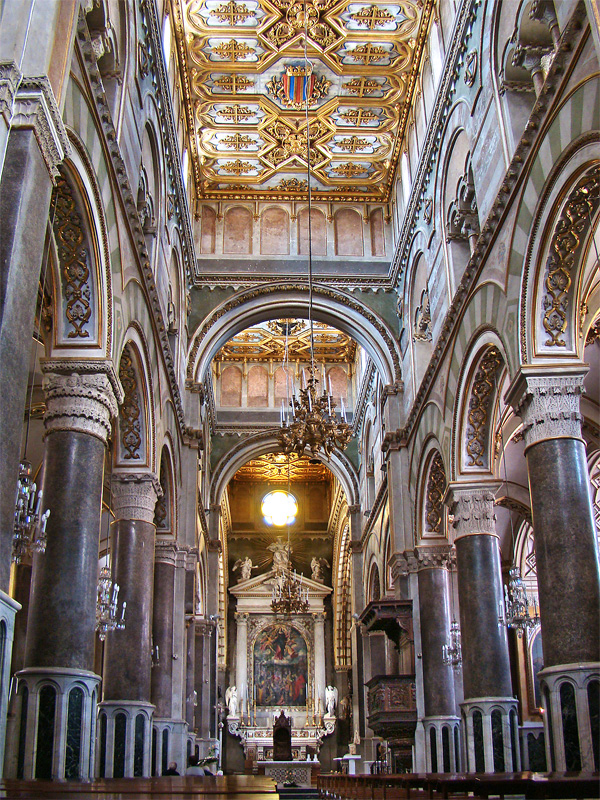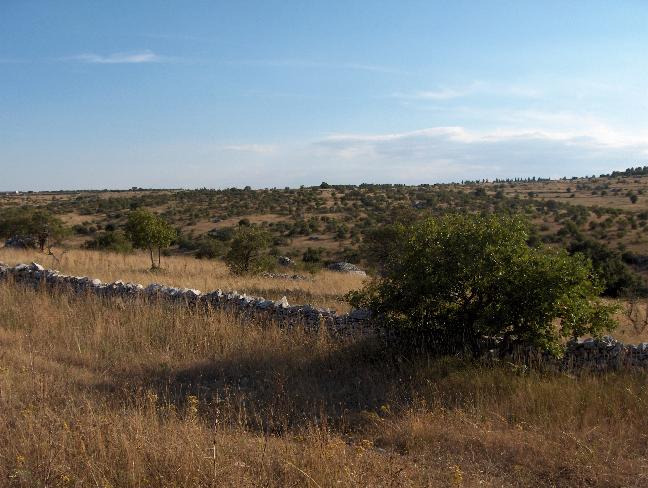|
Altamura
Altamura (; ; ) is a town and ''comune'' of Apulia, in southern Italy. It is located on one of the hills of the Altopiano delle Murge, Murge plateau in the Metropolitan City of Bari, southwest of Bari, close to the border with Basilicata. , its population amounts to 70,595 inhabitants. The city is known for its particular quality of bread called Pane di Altamura, which is sold in numerous other Italian cities. The 130,000-year-old calcified Altamura Man was discovered in 1993 in the nearby limestone cave called ''grotta di Lamalunga''. History The area of modern Altamura was densely inhabited in the Bronze Age (La Croce settlement and necropolis). The region contains some fifty Tumulus, tumuli. Between the 6th and the 3rd century BC a massive line of megalithic walls were erected, traces of which are still visible in some areas of the city. Ancient city The city was inhabited until around the tenth century AD. Then it was reportedly looted by Saracens. There are no reliab ... [...More Info...] [...Related Items...] OR: [Wikipedia] [Google] [Baidu] |
Altamura Cathedral
Altamura Cathedral (, ''Cattedrale di Santa Maria Assunta''), dedicated to the Assumption of the Blessed Virgin Mary, is a Roman Catholic cathedral in the city of Altamura, in the Metropolitan City of Bari, Apulia, in southern Italy. Since 1986 it has been the seat of the Bishop of Altamura-Gravina-Acquaviva delle Fonti, formed in that year. Previously it was the church of the territorial prelature of Altamura (from 1848, Altamura e Acquviva delle Fonti). History The church was built by will of Frederick II, Holy Roman Emperor, emperor Frederick in 1232–1254. The main gate, the portal, the rose window were all on the opposite side that in today's construction, while the altar was located in the area where the main gate is now. In 1248, under pressure from Frederick, Pope Innocent IV declared Altamura exempt from the jurisdiction of the bishop of Bari, making it a "palatine" church, one of four in Apulia. Historian Domenico Santoro (1688) hypothesized that the church may occ ... [...More Info...] [...Related Items...] OR: [Wikipedia] [Google] [Baidu] |
Altamura Man
The Altamura Man is a fossil of the genus ''Homo'' discovered in 1993 in a karst sinkhole in the Lamalunga Cave near the city of Altamura, Italy. Remarkably well preserved but covered in a thick layer of calcite, taking the shape of cave popcorn. The find was left in situ in order to avoid damage. Research during the following twenty years was based mainly on the documented on-site observations. Consequently, experts remained reluctant to agree on a conclusive age nor was there consensus on the species it belonged to. Only after a fragment of the right scapula (shoulder blade) was retrieved was it possible to produce an accurate dating of the individual, an analysis and diagnostic of its morphological features, and a preliminary paleogenetic characterization. In a 2015 paper published in the ''Journal of Human Evolution,'' it was announced that the fossil was a Neanderthal, and dating of the calcite has revealed that the bones are between 128,000 and 187,000 years old. Altamur ... [...More Info...] [...Related Items...] OR: [Wikipedia] [Google] [Baidu] |
Pane Di Altamura
''Pane di Altamura'' is a type of Italian naturally leavened bread made from remilled durum wheat semolina from the Altamura area of the province of Bari, in the Apulia region. The bread has ancient origin, with historical record of breadmaking in Altamura dating to 1420. Historically, the bread was prohibited from being baked in private ovens. In 2003, ''pane di Altamura'' was granted protected designation of origin (PDO) status within Europe, the first bread in Europe to receive this status. By law, it must be produced according to a range of strict conditions, including using particular varieties of durum wheat (all locally produced), a certain specification of water, a consistent production method, and must also have a final crust that is at least 3 mm thick. The shape of the bread is not essential for a loaf to be certified, but there are some traditional shapes. One common traditional shape resembles a "hat with a wide brim". Official production zone consists of t ... [...More Info...] [...Related Items...] OR: [Wikipedia] [Google] [Baidu] |
Santeramo In Colle
Santeramo in Colle (Bari dialect, Santermano: ) is a town in the Metropolitan City of Bari and region of Apulia, southern Italy. Its current name comes from Erasmus of Formia, St Erasmus, martyr of the Diocletian era and patron saint of the city who, according to legend, is responsible for its founding. Physical geography By altitude, Santeramo in Colle is the highest municipality in the metropolitan city of Bari. The countryside has the typical geomorphological features of the karst territory: a limestone substrate, with rocky out croups and the presence of Lama (geology), lamas (Lamalunga, Lamadavruscio, Lamadispina, Lamasinara, Lamadilupo), jazzi (Iazzitello, Iazzo vecchio, Iazzo Sava, Iazzo De Laurentiis, Iazzo De Luca), Sinkhole e Ponor, courts (Corte Finocchio, Curtocarosino, Curtolevacche, Curtopasso, Curtolafica), parks (Parco Giovanni, Parco Lanzano, Parconuovo, Parco del Trullo, Parco Sava, Parco Caldara), lakes (Lago Travato, Lagolupino, Lagolaguardia, Lagopalumbo, Lac ... [...More Info...] [...Related Items...] OR: [Wikipedia] [Google] [Baidu] |
Altopiano Delle Murge
The Altopiano delle Murge (Italian for 'plateau of the Murge') is a karst topographic plateau of rectangular shape in southern Italy. Most of it lies within Puglia and corresponds with the sub-region known as Murgia or Le Murge. The plateau lies mainly in the Metropolitan City of Bari and the province of Barletta-Andria-Trani, but extends into the provinces of Brindisi and Taranto to the south, and into Matera in Basilicata to the west. The name is believed to originate from the , meaning 'sharp stone'. Geography and geology The Murge plateau covers a surface of some 4,000 km², bordered by the Ofanto river and the Tavoliere delle Puglie to the north, the Adriatic Sea to the northeast, and by the Messapic depression, which separates it from the Salento peninsula, to the south. It is usually divided into Alta Murgia (High Murgia), the highest area, with poorer vegetation, and Bassa Murgia (Lower Murgia), with more fertile land, extensively planted with olive-trees for th ... [...More Info...] [...Related Items...] OR: [Wikipedia] [Google] [Baidu] |
Metropolitan City Of Bari
The Metropolitan City of Bari () is a metropolitan city in the Apulia region of Italy. Its capital is the city of Bari. It replaced the province of Bari and includes the city of Bari and some forty other ''comuni'' (: ''comune''). It was first created by the reform of local authorities (Law 142/1990) and then established by the Law 56/2014. It has been operative since January 1, 2015. The Metropolitan City of Bari is headed by the Metropolitan Mayor (''sindaco metropolitano'') and by the Metropolitan Council (''consiglio metropolitano''). Since 1 January 2015 Antonio Decaro, as mayor of the capital city, has been the first mayor of the Metropolitan City. It has an area of and a population of 1,218,191 as of 2025. Geography Overlooking the Adriatic Sea in south-eastern Italy, the Province of Bari is located in the central part of Apulia and is bordered on the west by the provinces of Matera and Potenza, to the north by the province of Barletta-Andria-Trani, and to the south b ... [...More Info...] [...Related Items...] OR: [Wikipedia] [Google] [Baidu] |
Bari
Bari ( ; ; ; ) is the capital city of the Metropolitan City of Bari and of the Apulia Regions of Italy, region, on the Adriatic Sea in southern Italy. It is the first most important economic centre of mainland Southern Italy. It is a port and university city as well as the city of Saint Nicholas. The city itself has a population of 315,473 inhabitants, and an area of over , while the urban area has 750,000 inhabitants. Its Metropolitan City of Bari, metropolitan province has 1.2 million inhabitants. Bari is made up of four different urban sections. To the north is the closely built old town on the peninsula between two modern harbours, with the Basilica di San Nicola, Basilica of Saint Nicholas, the Cathedral of San Sabino (1035–1171) and the Castello Normanno-Svevo (Bari), Norman-Swabian Castle, which is now also a major nightlife district. To the south is the Murat quarter (erected by Joachim Murat), the modern heart of the city, which is laid out on a rectangular grid-plan ... [...More Info...] [...Related Items...] OR: [Wikipedia] [Google] [Baidu] |
Comune
A (; : , ) is an administrative division of Italy, roughly equivalent to a township or municipality. It is the third-level administrative division of Italy, after regions () and provinces (). The can also have the City status in Italy, title of (). Formed according to the principles consolidated in Medieval commune, medieval municipalities, the is provided for by article 114 of the Constitution of Italy. It can be divided into , which in turn may have limited power due to special elective assemblies. In the autonomous region of the Aosta Valley, a is officially called a in French. Overview The provides essential public services: Civil registry, registry of births and deaths, registry of deeds, and maintenance of local roads and public works. Many have a (), which is responsible for public order duties. The also deal with the definition and compliance with the (), a document that regulates the building activity within the communal area. All communal structures ... [...More Info...] [...Related Items...] OR: [Wikipedia] [Google] [Baidu] |
Basilicata
Basilicata (, ; ), also known by its ancient name Lucania (, , ), is an administrative region in Southern Italy, bordering on Campania to the west, Apulia to the north and east, and Calabria to the south. It has two coastlines: a 30-kilometre stretch on the Gulf of Policastro (Tyrrhenian Sea) between Campania and Calabria, and a longer coastline along the Gulf of Taranto (Ionian Sea) between Calabria and Apulia. The region can be thought of as "the arch" of "the boot" of Italy, with Calabria functioning as "the toe" and Apulia "the heel". The region covers about . In 2021, the population was slightly over 540,000. The regional capital is Potenza. The region comprises two provinces: Potenza and Matera. Its inhabitants are generally known as Lucanians (), and to a lesser extent as or by other very rare terms. In ancient times, part of its territory belonged to Magna Graecia, subject to coastal Greek colonies (including Sybaris). Later the region was conquered by the ... [...More Info...] [...Related Items...] OR: [Wikipedia] [Google] [Baidu] |
Apulia
Apulia ( ), also known by its Italian language, Italian name Puglia (), is a Regions of Italy, region of Italy, located in the Southern Italy, southern peninsular section of the country, bordering the Adriatic Sea to the east, the Strait of Otranto and Ionian Sea to the southeast and the Gulf of Taranto to the south. The region comprises , and has 3,874,166 inhabitants as of 2025. It is bordered by the other Italian regions of Molise to the north, Campania to the west, and Basilicata to the southwest. The regional capital is Bari. In ancient times, more precisely at the beginning of the first millennium BC, the region of Apulia was inhabited by the Iapygians, while during the 8th century BC its coastal areas were populated by Magna Graecia, ancient Greeks. Later, the region was conquered by the ancient Romans. It was then conquered by the Byzantine Empire, Byzantines, followed by the Normans, the Kingdom of Aragon, Aragonese and the Spanish Empire, Spanish. Subsequently, it bec ... [...More Info...] [...Related Items...] OR: [Wikipedia] [Google] [Baidu] |
Troy
Troy (/; ; ) or Ilion (; ) was an ancient city located in present-day Hisarlik, Turkey. It is best known as the setting for the Greek mythology, Greek myth of the Trojan War. The archaeological site is open to the public as a tourist destination, and was added to the List of World Heritage Sites in Turkey, UNESCO World Heritage list in 1998. Troy was repeatedly destroyed and rebuilt during its 4000 years of occupation. As a result, the site is divided into nine Stratigraphy (archaeology), archaeological layers, each corresponding to a city built on the ruins of the previous. Archaeologists refer to these layers using Roman numerals, Troy I being the earliest and Troy IX being the latest. Troy was first settled around 3600 BC and grew into a small fortified city around 3000 BC (Troy I). Among the early layers, Troy II is notable for its wealth and imposing architecture. During the Late Bronze Age, Troy was called Wilusa and was a vassal of the Hittite Empire. The final layer ... [...More Info...] [...Related Items...] OR: [Wikipedia] [Google] [Baidu] |





